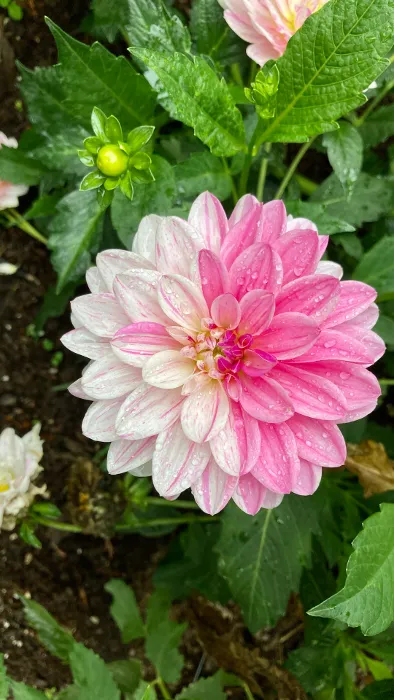How To Make New Varieties of Dahlias Easily

Disclosure: Some of the links in this article may be affiliate links, which can provide compensation to me at no cost to you if you decide to purchase.
**The Enchanting Role of Bees in Dahlia Cross-Pollination**
In nature, bees play a crucial role in pollinating flowers, including dahlias. When you grow different varieties of dahlias in your garden, these industrious insects will naturally cross-pollinate the flowers, leading to new unique dahlia hybrids when you collect and plant the seeds of your dahlias. Let's explore how bees facilitate this process and how it differs from propagating dahlias through tuber division.
**1. Bees and Natural Cross-Pollination:**
Bees are excellent pollinators and as they visit flowers to collect nectar and pollen, they inadvertently transfer pollen between the male (anthers) and female (stigma) parts of the flowers, facilitating cross-pollination.
When you grow different dahlia varieties in your garden, bees are naturally attracted to their vibrant and fragrant blooms. As they move from one flower to another, they pick up pollen from one variety and transfer it to another, resulting in a cross-pollination event. This cross-pollination combines the genetic material from two different parent plants, leading to the development of seeds with diverse traits.
As a result of natural cross-pollination, the seeds collected from these pollinated dahlias will carry genetic information from both parent plants. When you sow these seeds, you'll have the opportunity to grow new and unique dahlia hybrids, each one a delightful surprise that showcases the wonders of nature's genetic diversity.
**2. Propagation through Tuber Division:**
On the other hand, propagating dahlias through tuber division is a common method used to create clones of a specific dahlia variety. When you divide a dahlia tuber, you are essentially separating the tuber into multiple sections, each with its own growing point or "eye." These divided sections can be replanted, and each one will grow into an identical clone of the original mother plant.
Unlike seed propagation, tuber division does not introduce genetic diversity. The resulting plants will be genetically identical to the mother plant. This method is favored when you want to preserve the characteristics of a specific dahlia variety and ensure that its unique traits are passed down to the new plants.
**Advantages of Both Methods:**
Each propagation method has its own advantages:
1. **Seed Propagation (Natural Cross-Pollination):** This method opens up a world of possibilities, allowing you to create exciting new dahlia hybrids with diverse traits. It embraces the beauty of nature's random genetic combinations and rewards you with unexpected and unique blooms.
2. **Tuber Division:** This method is ideal when you have a favorite dahlia variety that you want to replicate and maintain its distinct characteristics. It's an excellent way to ensure that the new plants retain all the desired traits of the mother plant.
I get my Dahlias from this company:
In your garden, you can witness the enchanting dance of bees as they cross-pollinate your dahlia flowers, paving the way for the creation of new and stunning varieties. By embracing both natural cross-pollination through bees and tuber division, you can explore the full spectrum of dahlia propagation, from preserving cherished traits to unlocking the endless possibilities of nature's creativity.
So, whether you choose to enjoy the magic of natural hybridization or maintain the legacy of a beloved dahlia variety, both paths lead to a garden filled with beauty and wonder.
Related Articles:
Preserving Peony Flowers: The Marshmallow Bud Hack
https://inthegardensue.com/blog/preserving-peony-flowers-the-marshmallow-bud-hack
10 Common Mistakes when Growing Dahlias
https://inthegardensue.com/blog/10-common-mistakes-to-avoid-when-growing-dahlias
19 Shallow Rooted Plants for Your Raised Beds
https://inthegardensue.com/blog/19-shallow-rooted-plants-for-your-raised-beds
Create A Wildflower Meadow: Our Simple Guide
https://inthegardensue.com/blog/create-a-wildflower-meadow-our-simple-guide
Disclosure: Some of the links in this article may be affiliate links, which can provide compensation to me at no cost to you if you decide to purchase.

